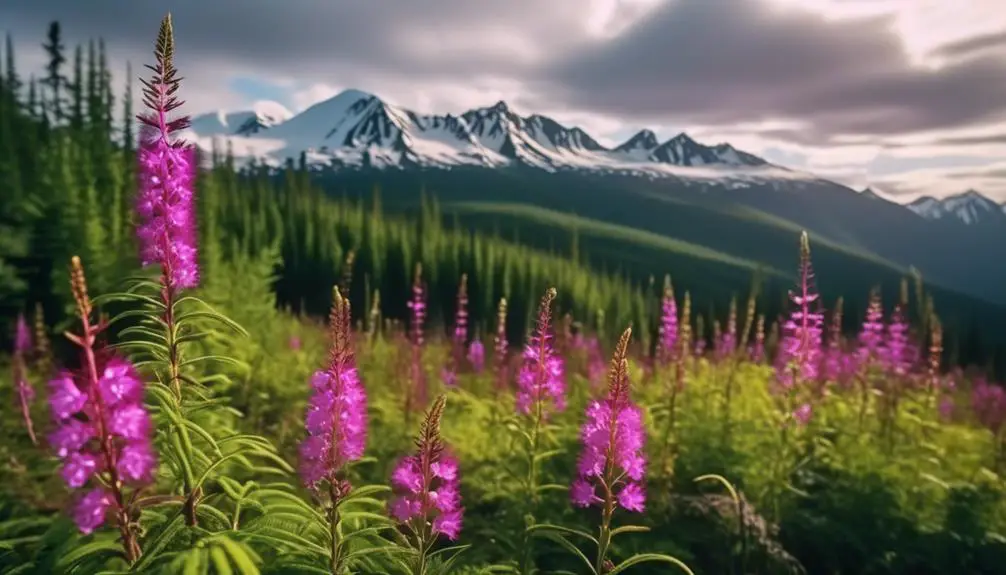If you find yourself in the vast wilderness of Alaska, you might come across a fascinating array of plant life that can be incorporated into your culinary adventures. These plants, often referred to as ‘wild edibles,’ offer a unique and intriguing addition to your meals.
From delicate flowers to hearty greens, their flavors can surprise and delight your taste buds. But before you venture into the world of wild edibles, there are a few things you should know.
Alaskan Berries

When exploring the diverse and delicious world of Alaskan berries, you’ll discover a tantalizing array of options waiting to be savored. Alaska is home to a variety of wild edible plants, including highbush blueberries, lowbush blueberries, salmon berries, highbush cranberries, lowbush cranberries, currants, and cloudberries. Each berry offers its own unique flavor and can be found in different regions of Alaska.
Highbush blueberries are commonly found below the treeline and in the rainforest. They’re larger in size and have a slightly tart taste. On the other hand, lowbush blueberries are sweeter and smaller, usually found in the alpine regions. These berries are a delightful treat when picked at their peak ripeness.
If you’re looking for something more exotic, try the salmon berry. With its vibrant orange color, it can be found in wet places like Prince William Sound or Girdwood. The flavor of the salmon berry is often described as a combination of raspberry and mango, making it a truly unique and flavorful experience.
To ensure you’re picking the right berries, it’s important to learn about them through reliable identification books and to be confident in your berry-picking abilities. Popular places to pick lowbush blueberries include the Chugach front range, Girdwood, and Manitoba Mountain.
Wild Greens

If you’re ready to expand your foraging adventures beyond the realm of berries, let’s now explore the wild greens that Alaska has to offer. Wild greens, such as fireweed, dandelion, and clover, aren’t only abundant but also edible and versatile. These wild plants can be used in various dishes, from soups to jams and teas.
When it comes to wild greens, different parts of the plants can be utilized. For example, the leaves of dandelions can be enjoyed raw in salads or cooked in soups, while the roots can be used as a coffee substitute or to make wine and tea. Incorporating these wild greens into your diet can add a unique and nutritious twist to your meals.
However, it’s important to gather wild plants responsibly and safely. Familiarize yourself with specific rules and considerations for harvesting, such as avoiding overharvesting and being cautious of gathering plants in areas sprayed with pesticides or contaminated with pollution. Enhance your knowledge of edible plants in Alaska by learning to identify common species through the use of field guides or attending workshops and joining local foraging groups.
Incorporating wild greens into your diet can provide a variety of vitamins, minerals, and antioxidants, potentially improving your overall health. So, why not explore the wild greens that Alaska has to offer and add a touch of raw, wild goodness to your meals?
Spruce and Pine
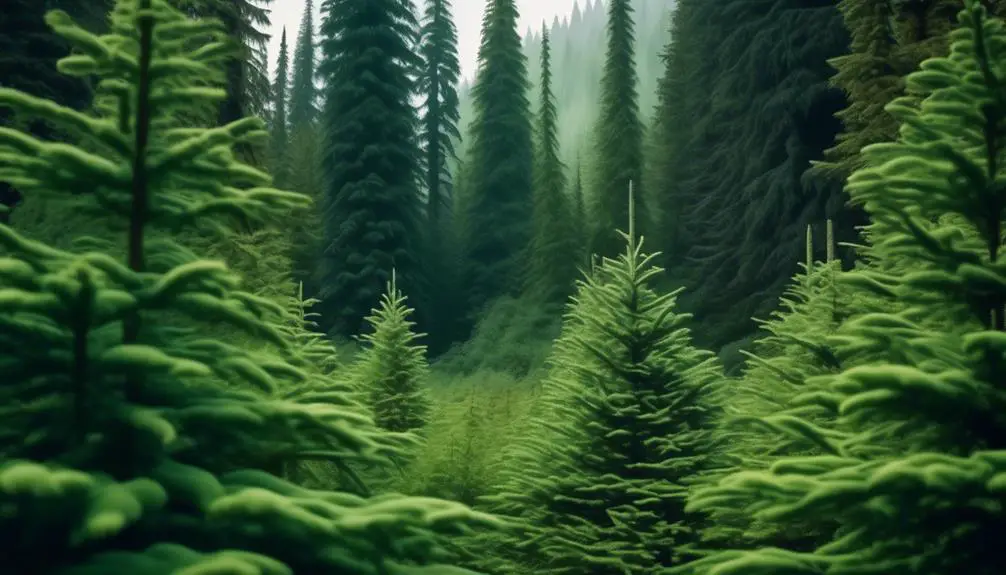
Spruce and pine, both belonging to the pine family, offer a range of edible possibilities and can be a valuable addition to your foraged ingredients. In Alaska, where the wild is abundant, spruce and pine are particularly noteworthy.
All spruce varieties from the pine family are edible, with spruce tips being the most sought-after. These tips are harvested in spring when the green tips start to emerge. They’re considered a delicacy in the world of wild edible plant foraging.
Incorporating spruce and pine into your culinary experiments can provide a taste of the wild and add a unique flavor to your dishes. Not only are they delicious, but spruce and pine also offer a valuable source of nutrients. They’re packed with vitamins, especially vitamin C, and can provide a boost to your immune system.
Take the time to learn to identify different varieties of spruce and pine to expand your knowledge of wild edible plants. With their abundance and versatility, spruce and pine are a great addition to any forager’s repertoire.
Birch Syrup and Bark
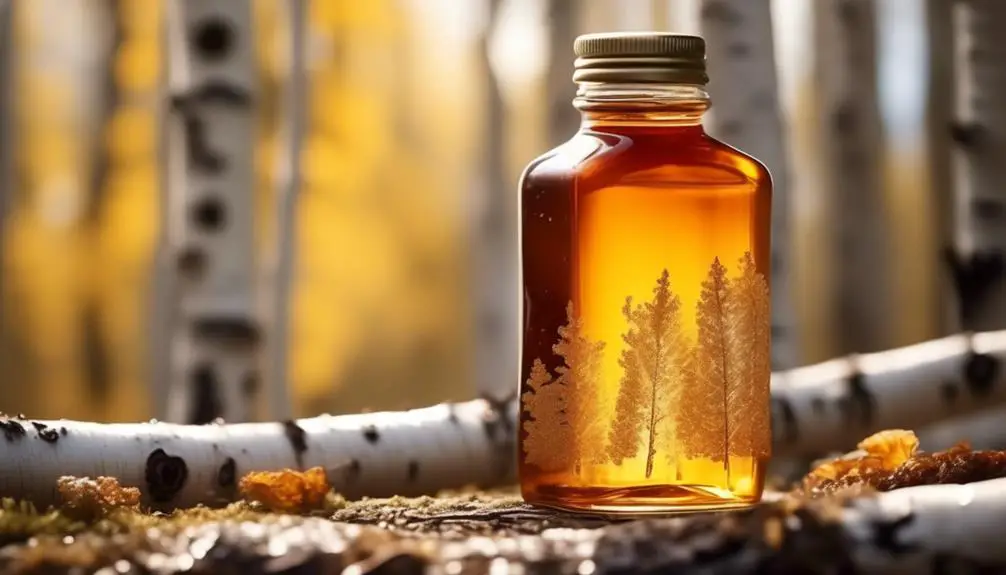
Birch syrup and bark offer a range of culinary possibilities in Alaska’s wilderness. The edible Alaska presents a variety of wild edibles, and birch is no exception. Birch syrup, made from the sap of birch trees, is a unique and flavorful alternative to traditional maple syrup. It adds a distinct taste to dishes, making it a sought-after ingredient in Alaska’s culinary scene. Birch syrup treats, such as caramels and other sweet treats, can be made using this delicious syrup.
Not only is the sap of the birch tree edible, but so is the bark. Dry birch bark can be used to make birch spice, which adds a delightful flavor to baked goods. Additionally, birch twigs can be used to make tea, offering a refreshing and natural beverage option.
It is important to note that harvesting and using birch syrup and bark require proper knowledge and identification to ensure safety and sustainability. To learn more about the culinary possibilities of birch syrup and bark, you can refer to the book ‘Wild Edible Plants in Alaska’ by Alaska Northwest Books. This informative resource will provide you with valuable insights into the rich and diverse world of wild edibles in Alaska.
Cattails and Ferns
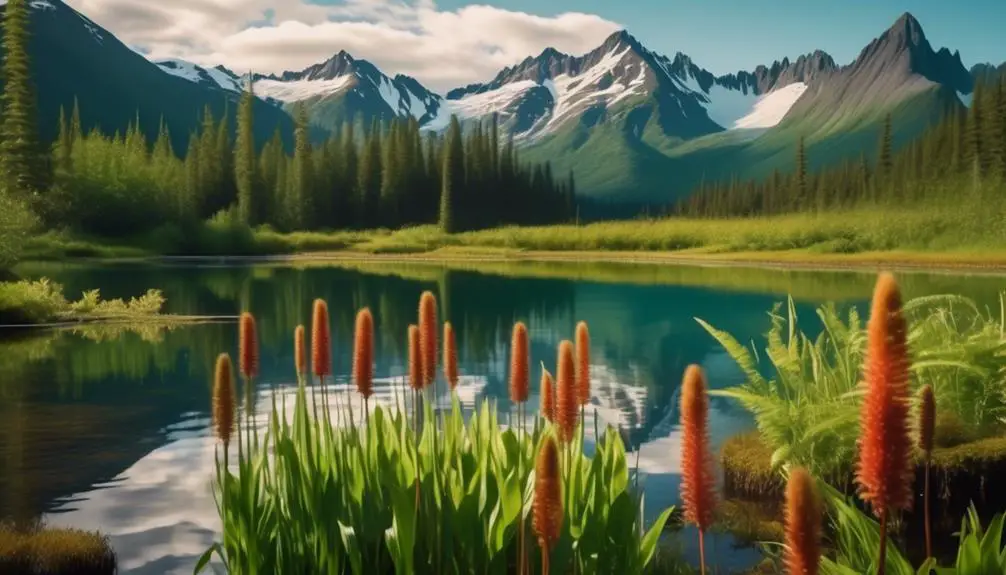
Now let’s turn our attention to cattails and ferns, two other valuable sources of edible plants in Alaska’s wilderness.
Cattails can be found in wet areas and moist fields, making them easily accessible for foragers. The plant offers a variety of edible parts, including the young shoots, roots, and pollen. Cattail pollen is particularly versatile, as it can be added to other foods for added nutrients or used as a thickener in recipes.
Moving on to ferns, one popular choice among foragers is the fiddlehead fern. These young, tightly coiled fronds should be picked when they’re still small, usually in the spring. It’s important to note that fiddleheads should never be eaten raw, as they may contain toxins. However, once boiled or cooked, they make a delicious side dish or a unique addition to a salad.
Both cattails and ferns provide valuable options for those seeking wild edible plants in Alaska. Whether you’re looking to enhance the nutritional value of your meals with cattail pollen or enjoying the unique taste of fiddlehead ferns, these plants offer a taste of the wilderness and a connection to the natural resources that Alaska has to offer.
Forget-me-nots
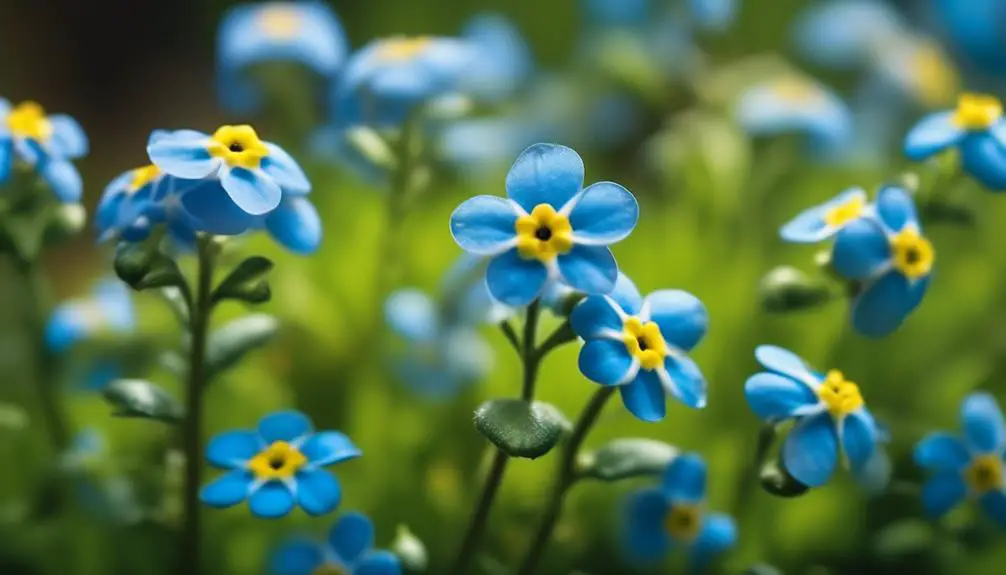
Forget-me-nots, the state flower of Alaska, aren’t only visually appealing but also edible, making them a unique and flavorful addition to any dish. When it comes to exploring the world of edible wild plants in Alaska, forget-me-nots shouldn’t be overlooked. These beautiful flowers can be found in abundance throughout the state, and with the help of field guides, you can easily identify them.
The young leaves of forget-me-nots are the most commonly consumed part of the plant. They’ve a mild, slightly nutty flavor that adds a delightful twist to your culinary creations. The leaves can be used to garnish salads or delicately placed on desserts for a visually stunning presentation.
To incorporate forget-me-nots into your cooking, start by harvesting the young leaves. Make sure to wash them thoroughly before use. You can add them to salads, soups, or even sauté them with other vegetables for a tasty side dish. Their unique flavor will elevate any dish and impress your friends and family.
Next time you’re out exploring the wilderness of Alaska, don’t forget to keep an eye out for these edible wild plants. Forget-me-nots not only add beauty to the landscape, but they also offer a unique culinary experience that you won’t want to miss. So, grab your field guide and start incorporating forget-me-nots into your next meal for a truly unforgettable dining experience.
Eskimo Potatoes

While exploring the world of edible plants in Alaska, another fascinating option to consider is Eskimo Potatoes. These plants have edible roots that are packed with essential nutrients such as vitamin C, protein, and fiber. They can be consumed in various ways, whether raw, boiled, baked, or fried, making them a versatile and nutritious option in the wild.
However, it’s important to note that proper identification of Eskimo Potatoes is crucial before consumption. Consulting field guides for accurate recognition is highly recommended to avoid any potential risks. Additionally, it’s best to harvest Eskimo Potatoes before they flower for optimal taste and texture.
One important thing to keep in mind is that Eskimo Potatoes MUST be cooked before eating. Failure to do so can result in an unpleasant taste and potential digestive issues. Therefore, it’s crucial to ensure that you cook Eskimo Potatoes thoroughly to enjoy their nutritional benefits safely.
Lastly, it’s essential to harvest these plants cautiously and avoid overharvesting to maintain their sustainability in the wild.

